Customer Pain Points: How to Identify and Solve Problems
Jenny Keohane
What are your customers’ pain points? This question is something both your sales and marketing team must be experts on to drive business growth and revenue.
From financial pain points to productivity pain points, you need to uncover the biggest challenges your prospective customers face in order to position your product or service as the solution.
But no customer is the same – sales reps must ask the right questions to present a solution that caters to that specific prospect and their business.
Let’s explore the best ways to identify customer pain points, align insights, and solve these problems.
Here’s what we’ll cover:
- What Are Customer Pain Points?
- Types of Customer Pain Points
- How to Identify Customer Pain Points
- How to Solve Customer Pain Points
What Are Customer Pain Points?
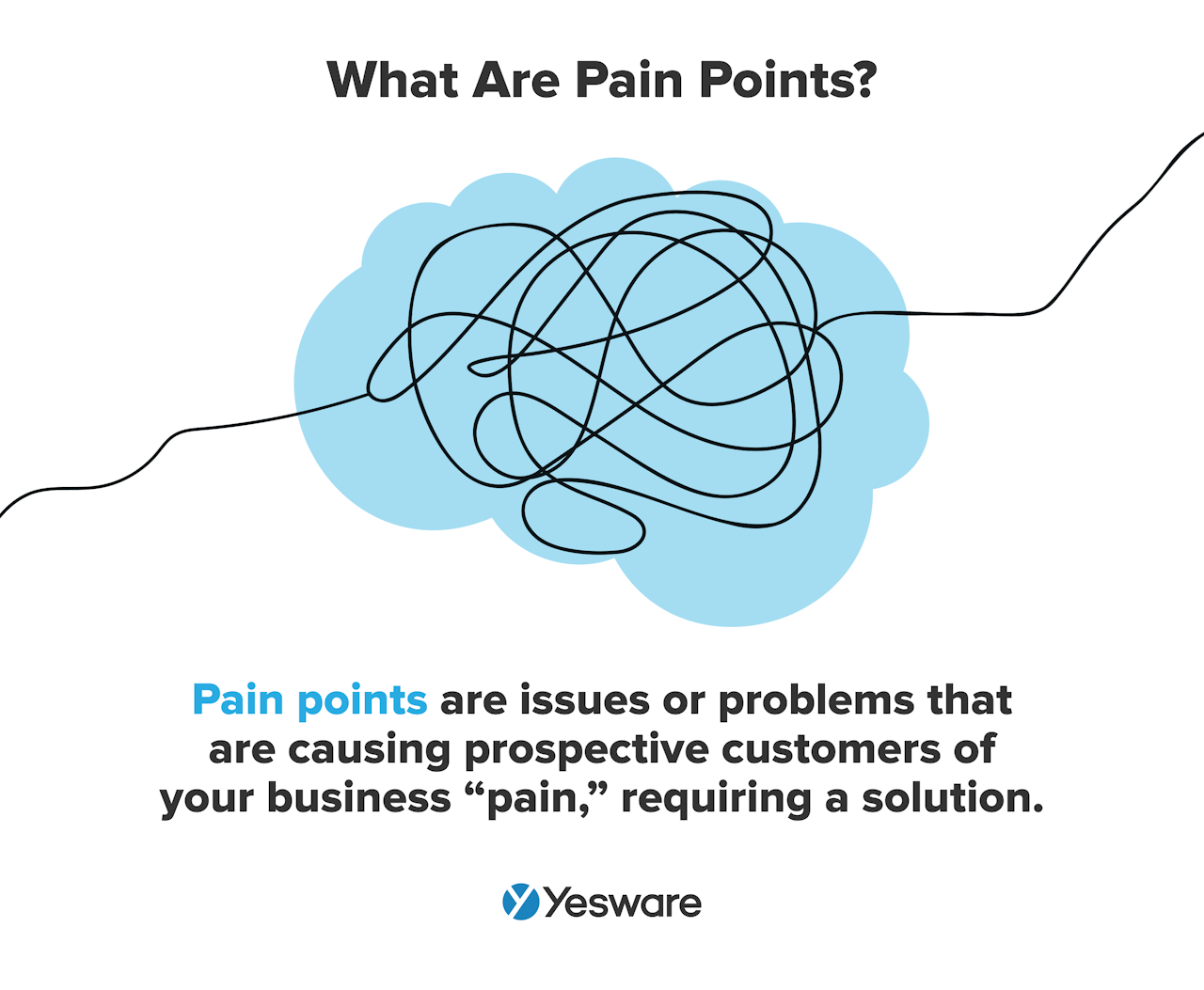
Pain points are issues or problems that are causing prospective customers of your business “pain,” requiring a solution.
Uncovering customer pain points ultimately affects both your sales and marketing strategy.
Salespeople want to figure out the prospect’s pain points so that they can tailor their sales pitch and present the product or service they’re selling as the appropriate solution. And marketers want to understand these pain points so that they can advertise/market their solution in an appealing and enticing way.
That’s why identifying and uncovering pain points is so crucial.
However, uncovering customer pain points isn’t as easy as it seems and there is no one-size-fits-all tactic. In fact, some customers don’t even know the root of the issues they’re struggling with.
Types of Customer Pain Points
Customer pain points are often grouped into 4 main types: productivity, financial, process, and support.
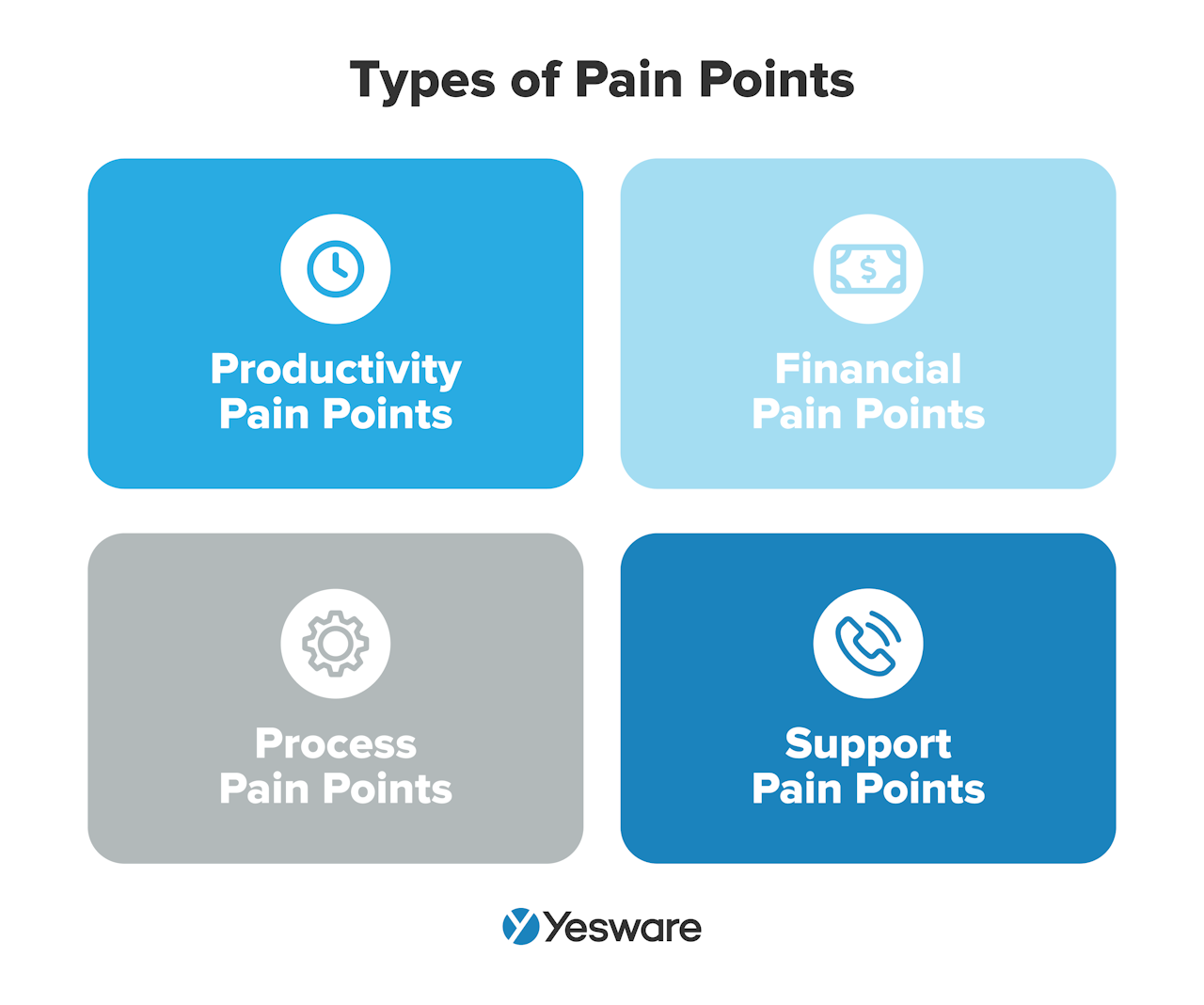
Productivity Pain Points
Productivity pain points refer to roadblocks that waste time and prolong processes. As the saying goes “time is money.” Businesses want to be more efficient with their time and will look for solutions that solve these roadblocks.
An example of a productivity pain point is a manual process that takes hours to complete.
Let’s look at some more productivity pain point examples here: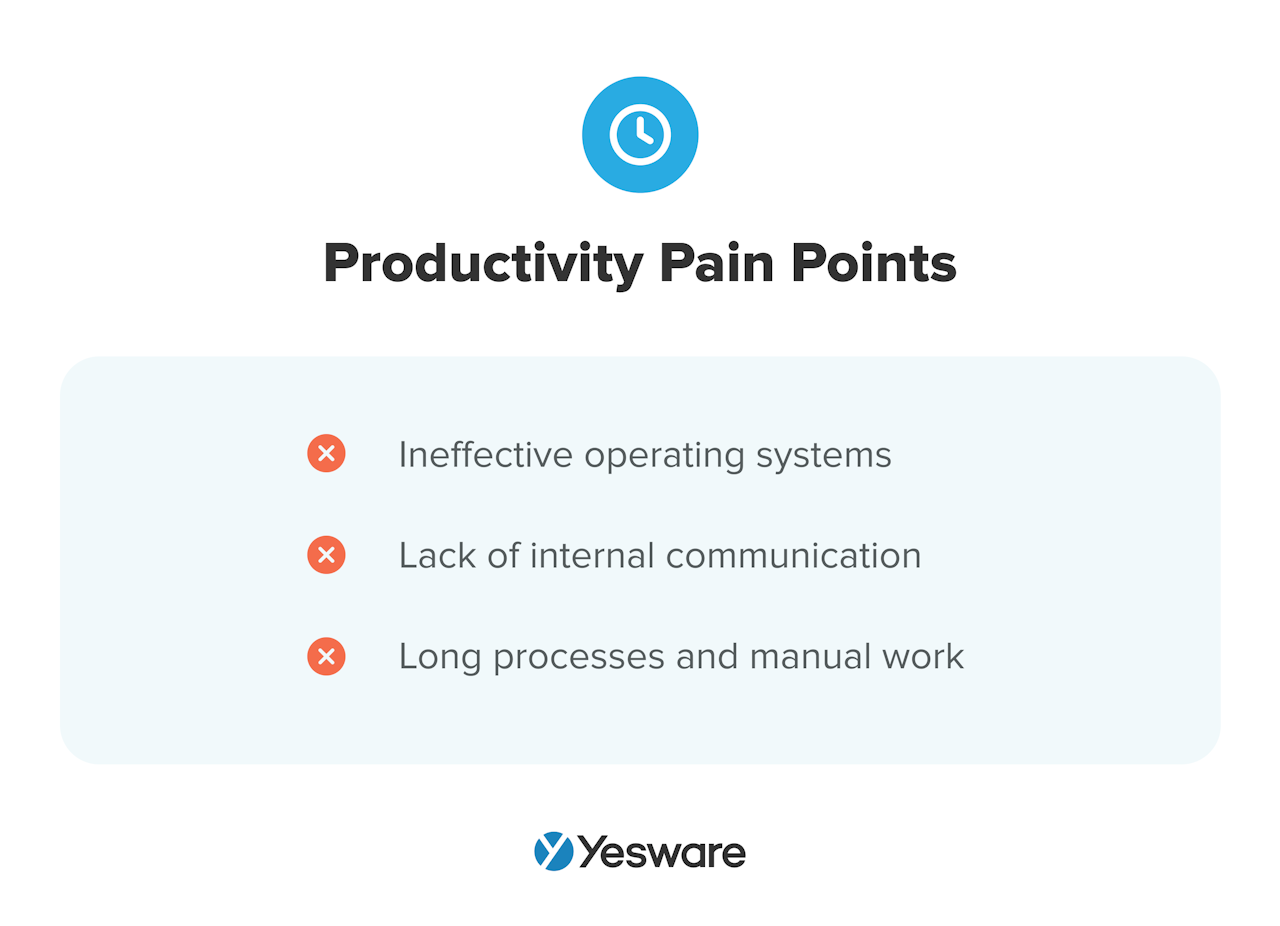
Financial Pain Points
Financial pain points are the most common and crucial pain point of them all. This type of pain point refers to roadblocks that are losing businesses money. Financial pain paints cause significant headaches and stress. At the end of the day, all businesses benefit from a better financial standing.
A sample financial pain point could be a legacy software that costs more money than it saves.
More financial pain point examples here: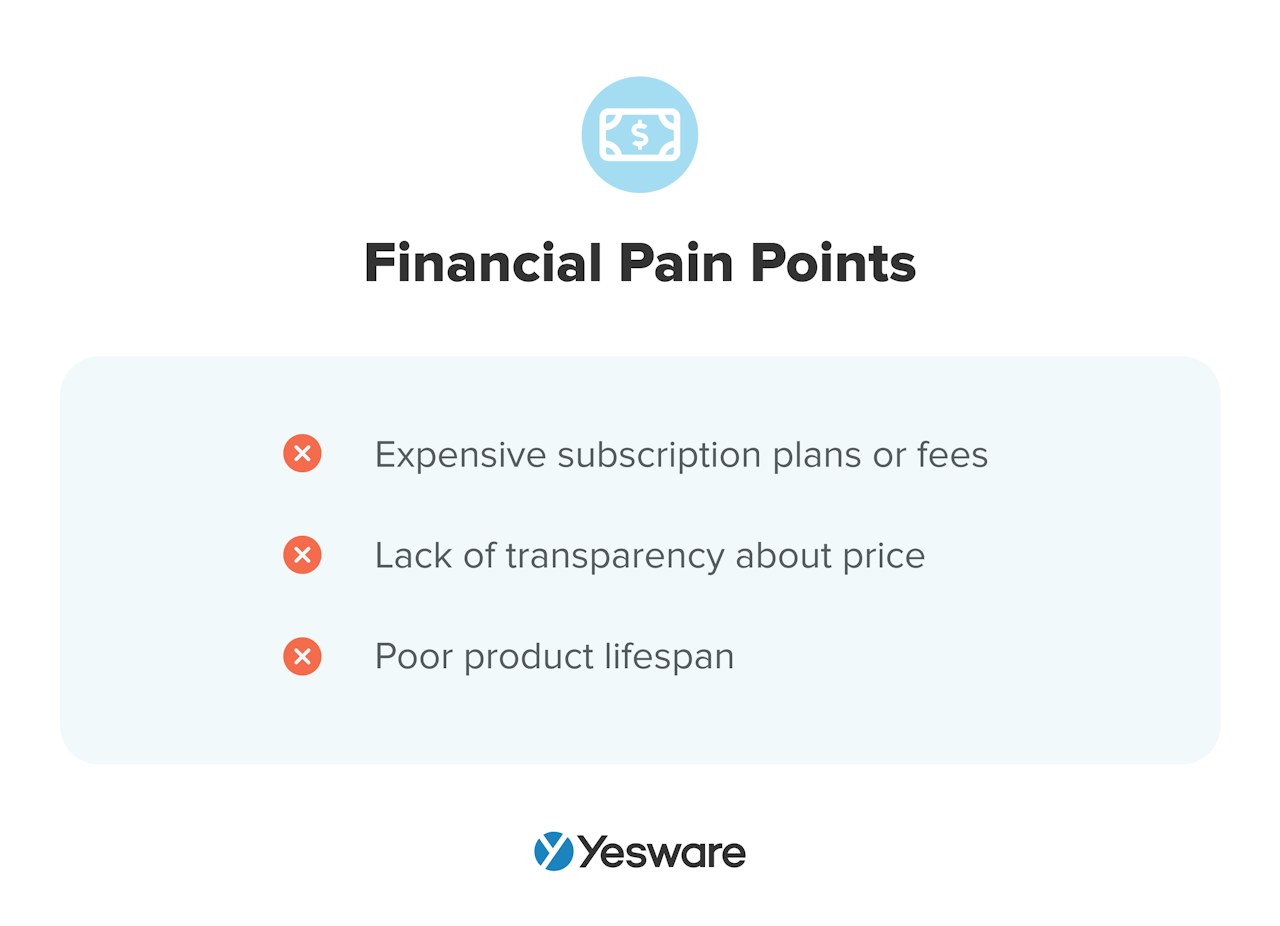
Process Pain Points
Process pain points refer to issues with internal processes and systems in place. Operational inefficiencies can cause various bottlenecks including lost productivity, disorganization, and inconsistent workflows.
A process pain point could be internal project management among teams.
Other process pain point examples include: 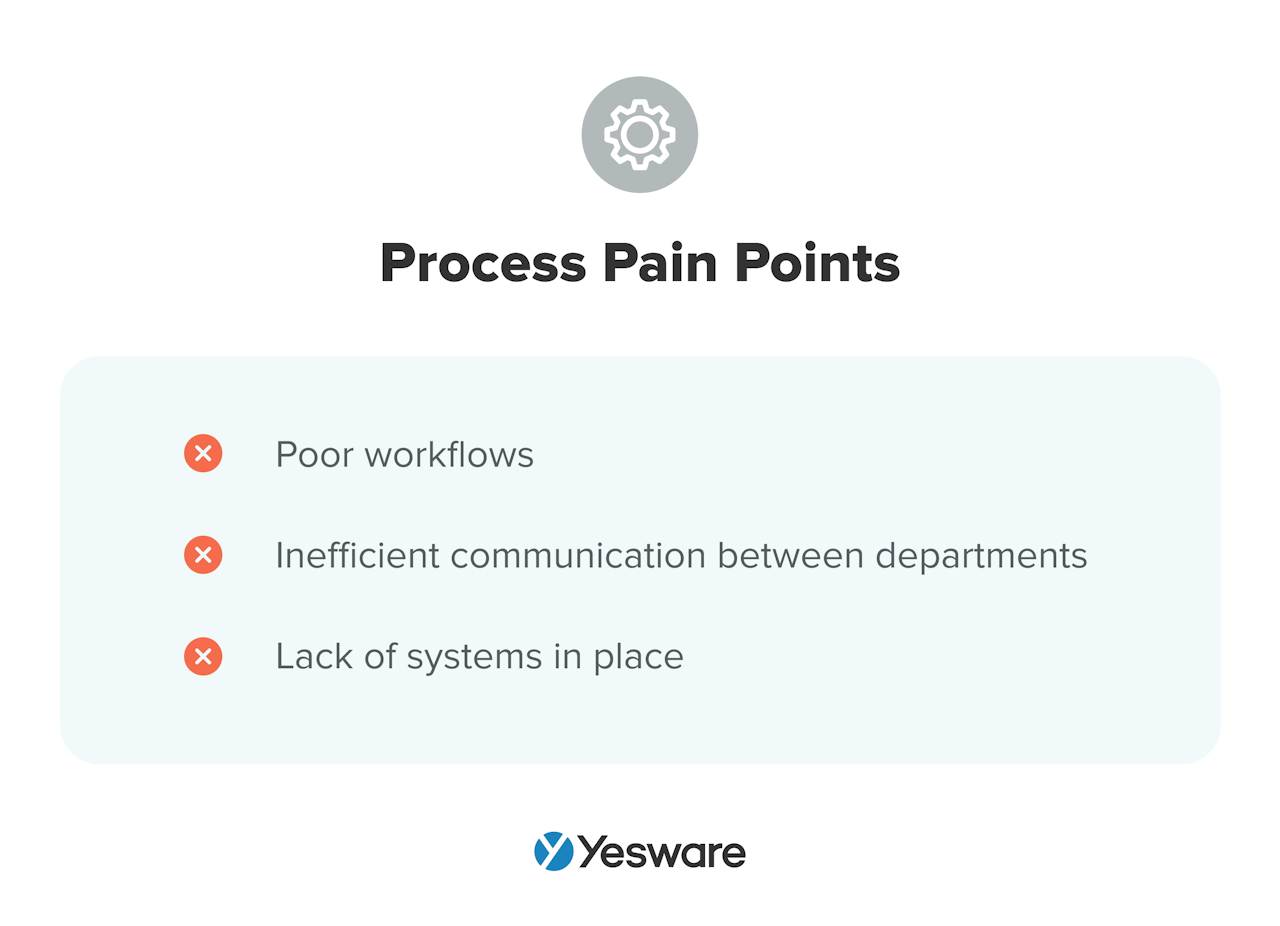
Support Pain Points
Support pain points occur when customers are not receiving the appropriate support they need, especially at critical stages of the customer journey. Customer support is essential for smooth processes to take place and lacking support results in unresolved issues.
An example of a support pain point is customers not knowing where to turn when they have a question.
Some other support pain point examples include: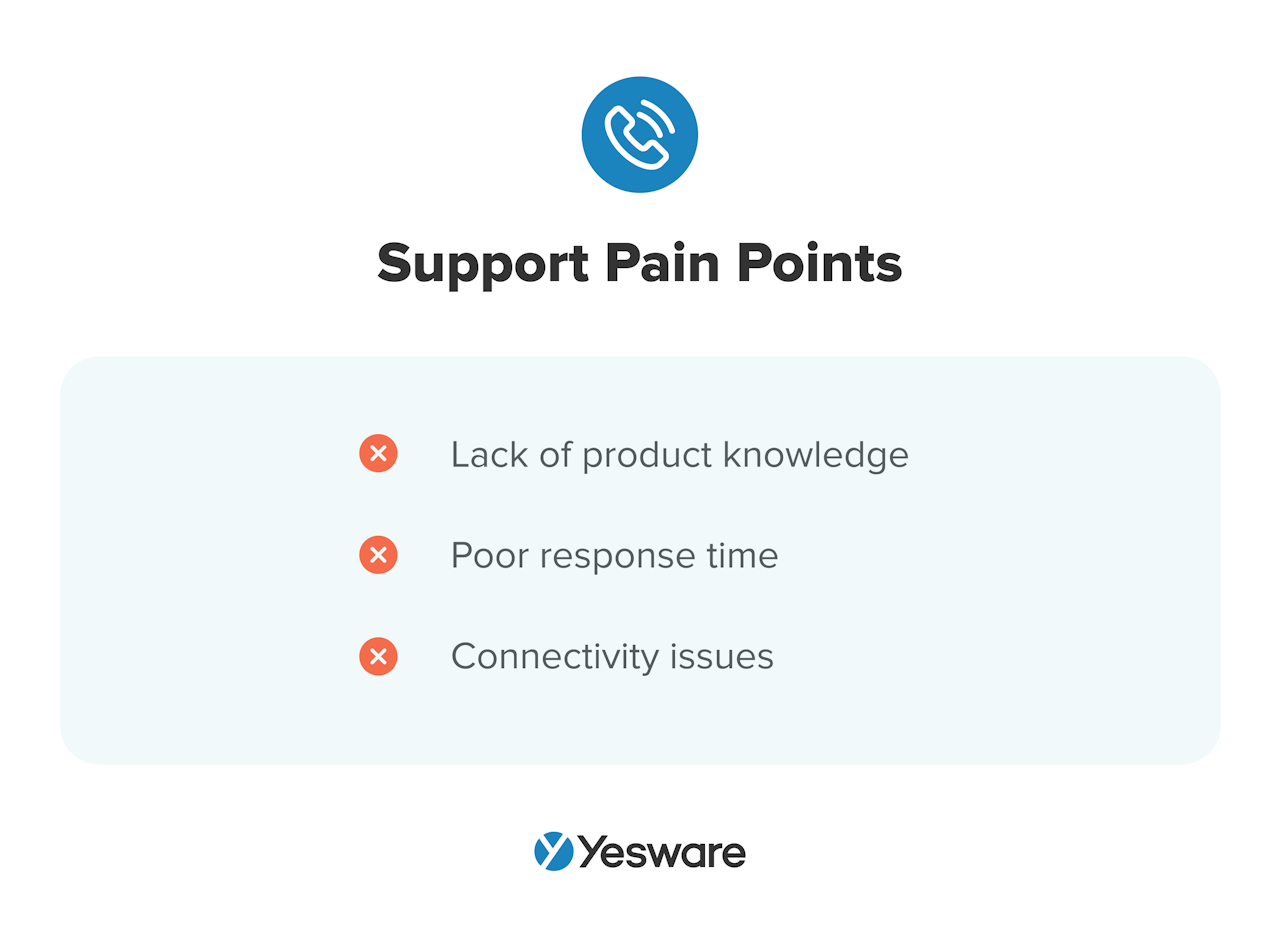 Identifying the type of pain point your prospect is struggling with will help you position your solution and tailor your offer to their needs.
Identifying the type of pain point your prospect is struggling with will help you position your solution and tailor your offer to their needs.
For example, if your prospect is struggling with financial problems, emphasize the ROI your customers are achieving or highlight average savings. Better yet, if your solution costs less than your competitors, make this loud and clear.
How to Identify Customer Pain Points
Conduct Qualitative and Quantitative Research
Many teams conduct qualitative and quantitative research to identify prospective pain points.
Qualitative research generates in-depth, detailed responses typically by asking open-ended questions. And quantitative research generates more hard data and numerical information by asking standardized questions.
Both your sales and marketing teams can generate these findings in different ways.
For example:
- Sales team: what are the most common pain points that arise in discovery calls with prospects?
- Marketing team: what are the common struggles identified in your research and surveys?
Here’s an example of qualitative research. The marketing team here at Yesware sent out a survey asking salespeople what their biggest sales challenges are right now.
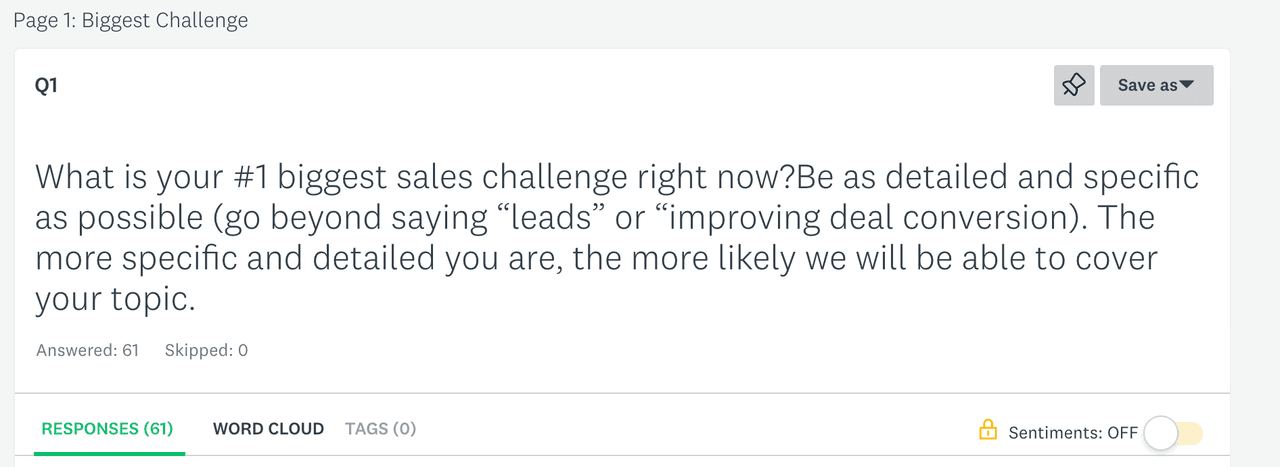
Asking the participants to leave a detailed response helped to generate thorough answers which gave us a deeper understanding of what our prospects are struggling with.
This not only helps us write content based on these pain points but informs both our marketing and sales teams what business problems our target audience is currently facing.
Also, there’s plenty of research and studies online. You’re selling to salespeople? Search for the biggest challenges salespeople face.
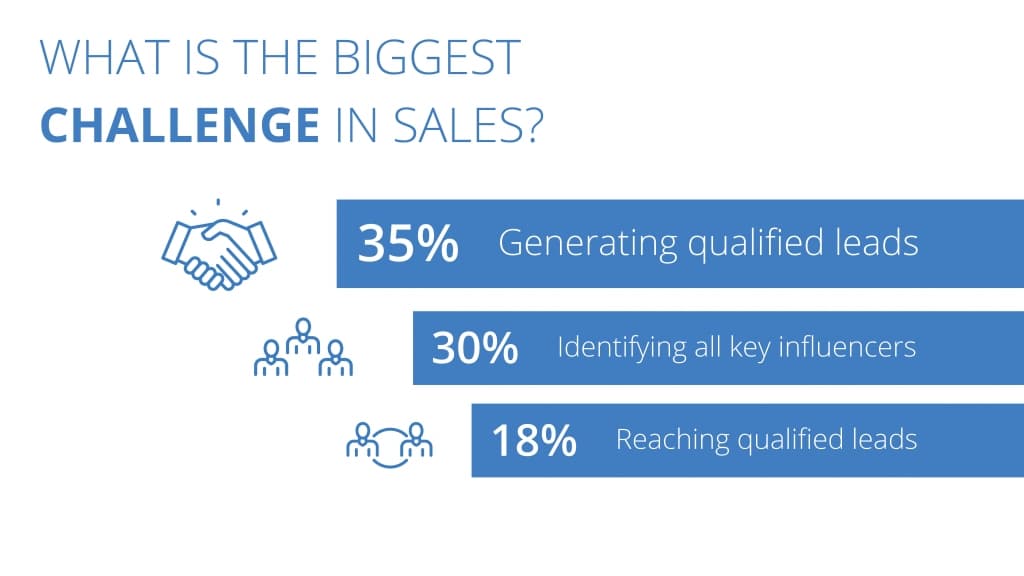 There are various ways for both teams to learn more about prospects:
There are various ways for both teams to learn more about prospects:
- Research
- Surveys
- Personal phone calls
- Social media
- Online reviews
- Competitors
- Industry events
But the most effective way is to talk to them directly. Let’s look at how to do this next.
Ask Open-Ended Questions
When talking to a prospect – it all comes down to asking the right questions. Your prospects most likely started their buying journey in the first place based on a business pain, and now they’re looking for a solution.
The best way to uncover this business pain is by getting the prospect talking. And what’s the best way to do this?
By asking open-ended questions.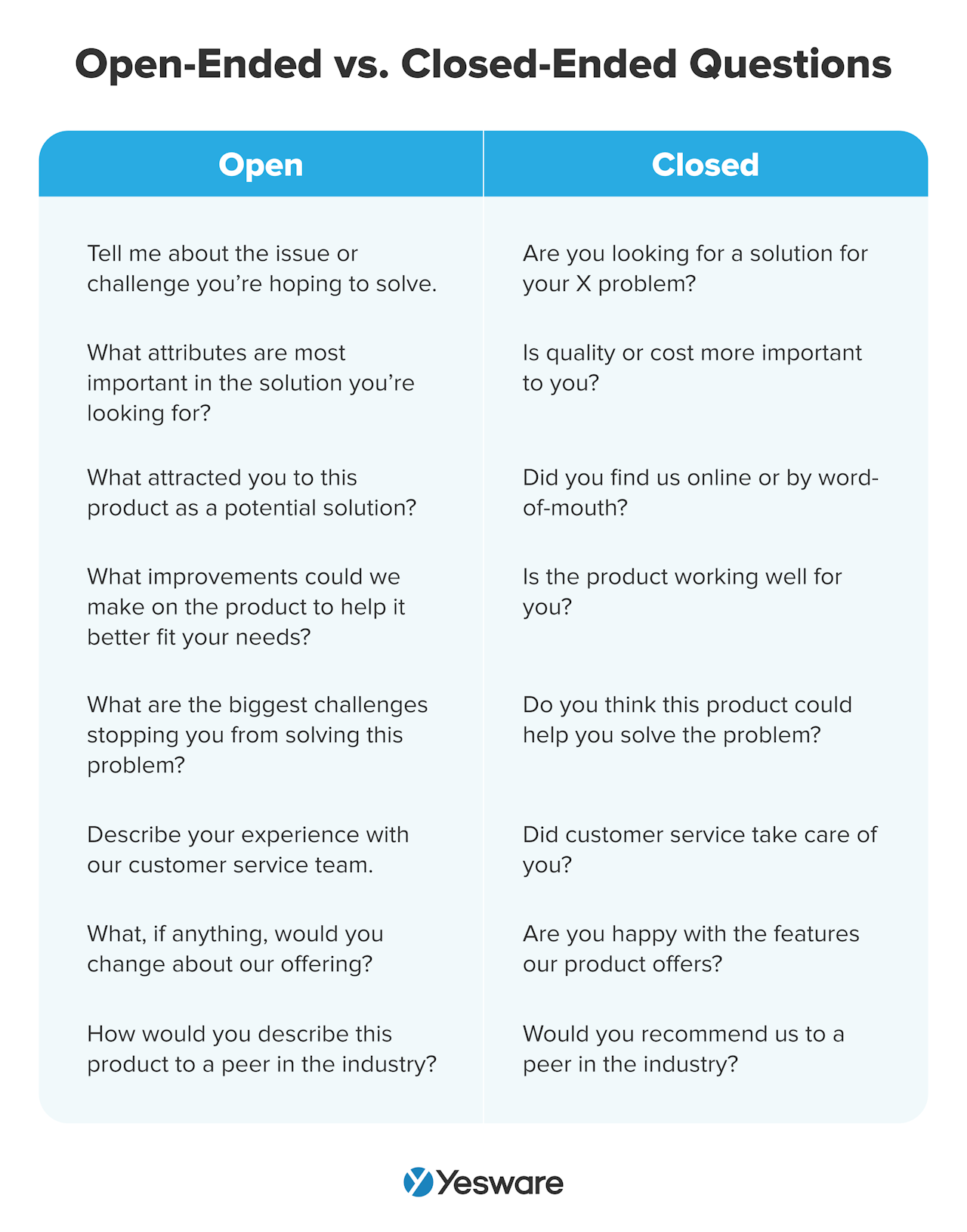 Avoid questions with yes or no answers – this will only give you a narrow and limited view of your prospect’s problems.
Avoid questions with yes or no answers – this will only give you a narrow and limited view of your prospect’s problems.
The key is to ask open-ended qualitative questions that require an in-depth explanation, giving you a broader view of the problem. This allows you to grasp as much information as possible.
Questions You Can Ask to Uncover Your Prospect’s Pain Points:
- What takes up the most time in your day?
- Why isn’t your current solution and/or process working for you?
- What is the biggest challenge you’re currently facing?
- You mentioned frustration around X. Can you elaborate?
- What is preventing you from hitting your goals?
- What’s the main thing you would say is holding your business back from growth?
- If you had an unlimited budget, what is the first improvement you would make?
- What is one thing you would change about the current operations of your business and/or team?
In the questions above, your role is to carefully listen and pinpoint the issues that your solution specifically can solve. And when you present your solution, your response should be tailored around what the prospect said.
By doing so, you 1) show that you were listening and 2) address the pain point head-on.
To clearly convey that you were actively listening, rephrase what the prospect said. For example: “X will help save you hours per day” vs. “You mentioned you waste hours per day logging information, well X will reduce that by Y.”
Align Sales and Marketing Data
Sales and marketing alignment is crucial for identifying customer pain points.
In your marketing activities such as ads and landing pages – use emotional triggers that address very specific pain points. Grab the audience’s attention by addressing these pain points head-on and reinforcing why your product or service can ease your prospects’ pain.
In fact, 62% of customers want marketing content that speaks to pain points.
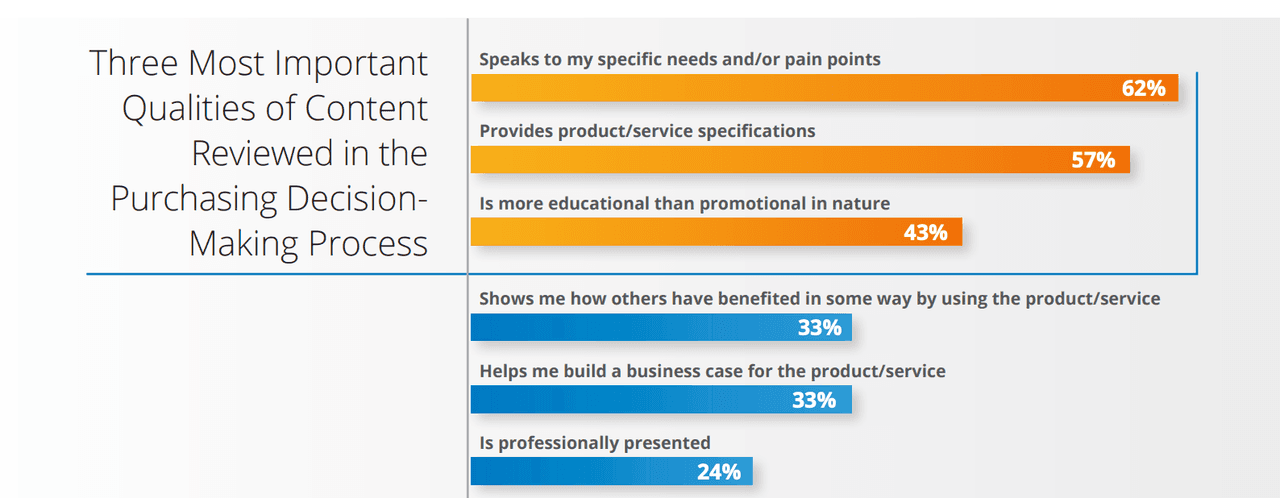
Then, these pain points will naturally arise in your sales conversations because that specific pain point was already targeted through marketing content.
Align your data, and you both succeed.
Tip: Use these psychology-backed strategies to connect with more buyers.
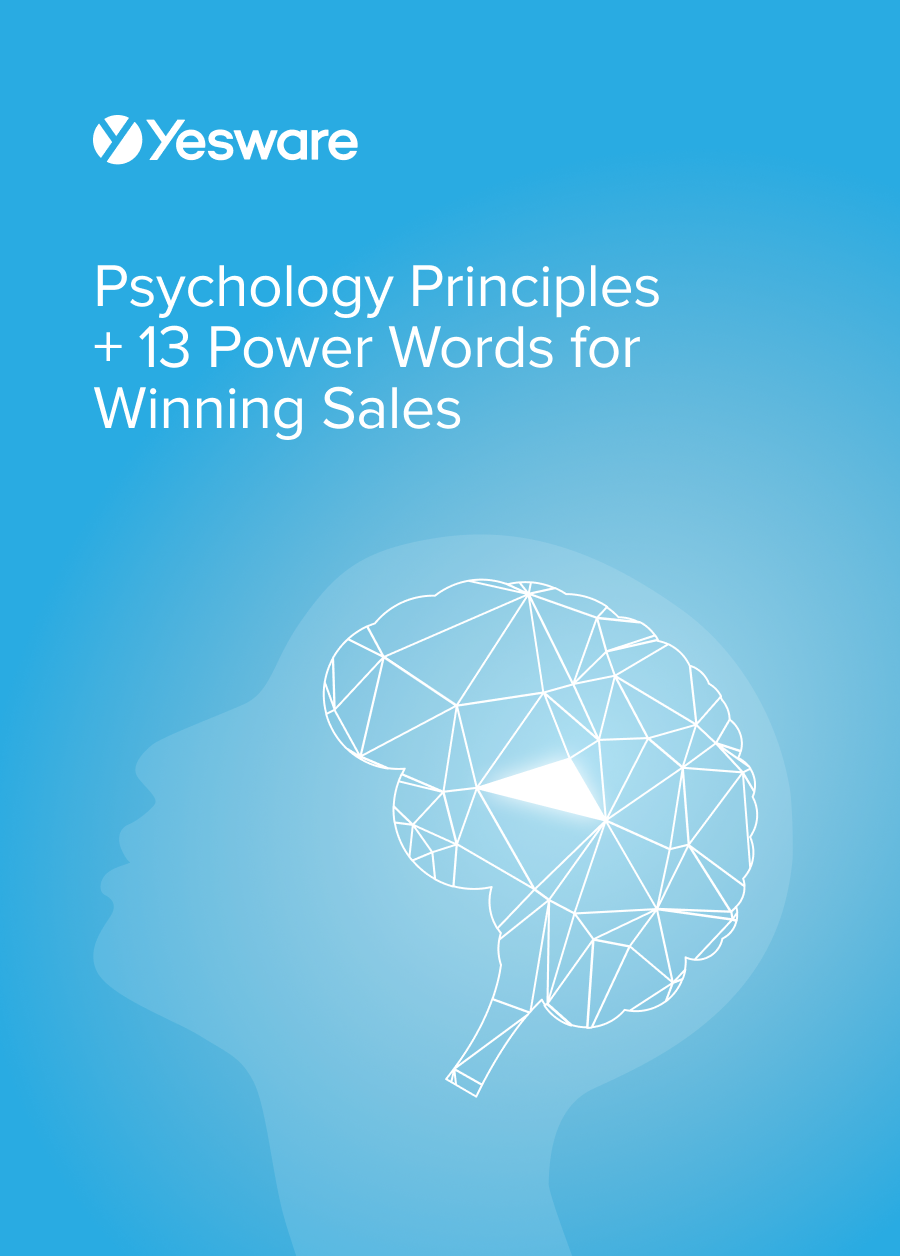 Psychology Principles + 13 Power Words for Winning SalesData-backed psychological principles, nonverbal cues, and persuasive phrases to win more deals.
Psychology Principles + 13 Power Words for Winning SalesData-backed psychological principles, nonverbal cues, and persuasive phrases to win more deals.
How to Solve Customer Pain Points
Share Solutions Through Customer Testimonials & Case Studies
If you’re confident that your product can solve your prospect’s pain points, your next step is to show it. Just because you say you can solve their problems doesn’t mean you can – they need proof.
This is where customer testimonials and case studies can come into play. You’re giving your prospects a chance to hear from real people.
But generic and non-authentic case studies won’t do the trick. You need to create case studies that are as genuine as possible.
For example, here at Yesware, we conducted a customer testimonial series where we simply went on a zoom call and asked various customers questions about how Yesware solves their pain points.
Rather than filming it ourselves and making the testimonial look and sound glamorized and professional, we allowed customers to sit in the comfort of their homes or offices and answer the questions in whatever way they want. This helps create testimonials that are as raw and authentic as possible.
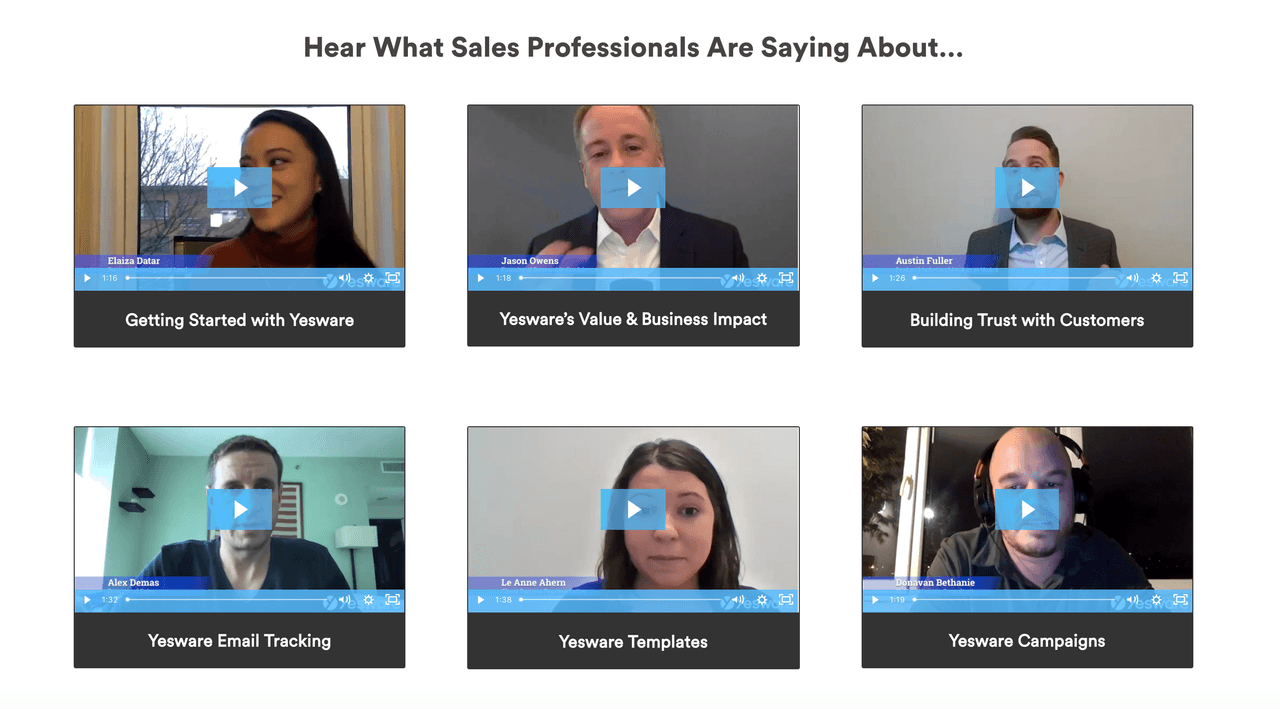
For marketing, you can display these on your site and on social media. And for sales, you can hand these off to prospects based on the specific pain points that arise in buyer conversations.
Another way you can specifically address pain points is by providing case studies on how customers have achieved X, Y, and Z using your solution.
Here’s an example of how we do this on our website: 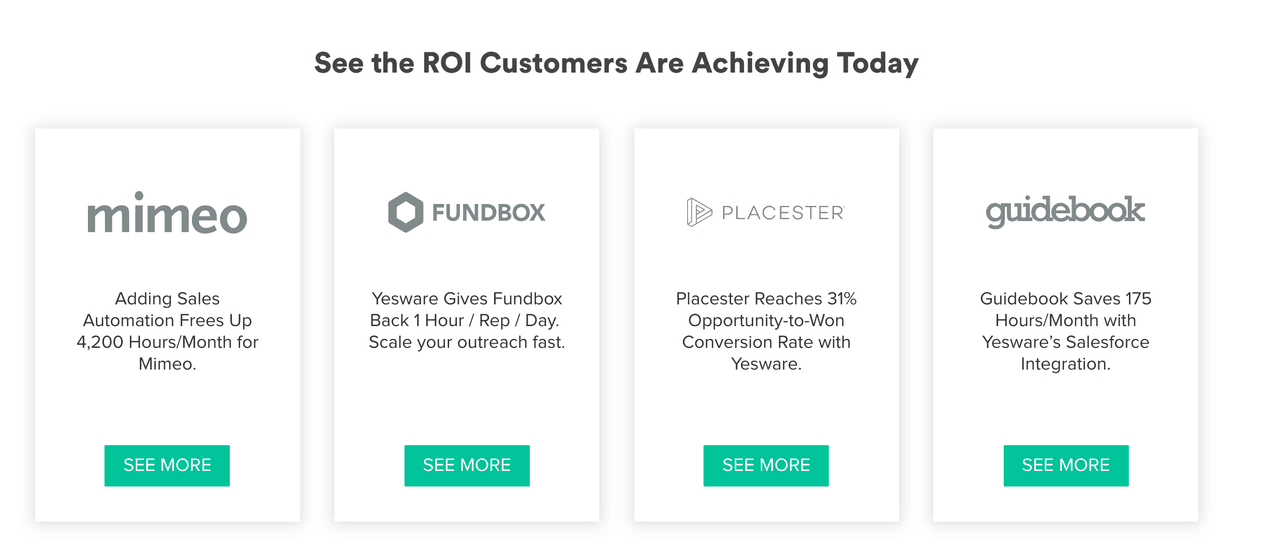
Make sure your prospects have access to case studies and testimonials, giving them validation that your solution does in fact solve the issues they’re facing.
Show Customers That You Understand Their Pain Points
It’s important to communicate how you’re going to solve your customer’s pain points. But in order to do so, there’s a crucial step that comes first.
You need to show your prospects that you understand their pain points. Then, they’ll trust your solution much more comfortably.
In fact, according to IBM, 78% of customers don’t feel understood by brands.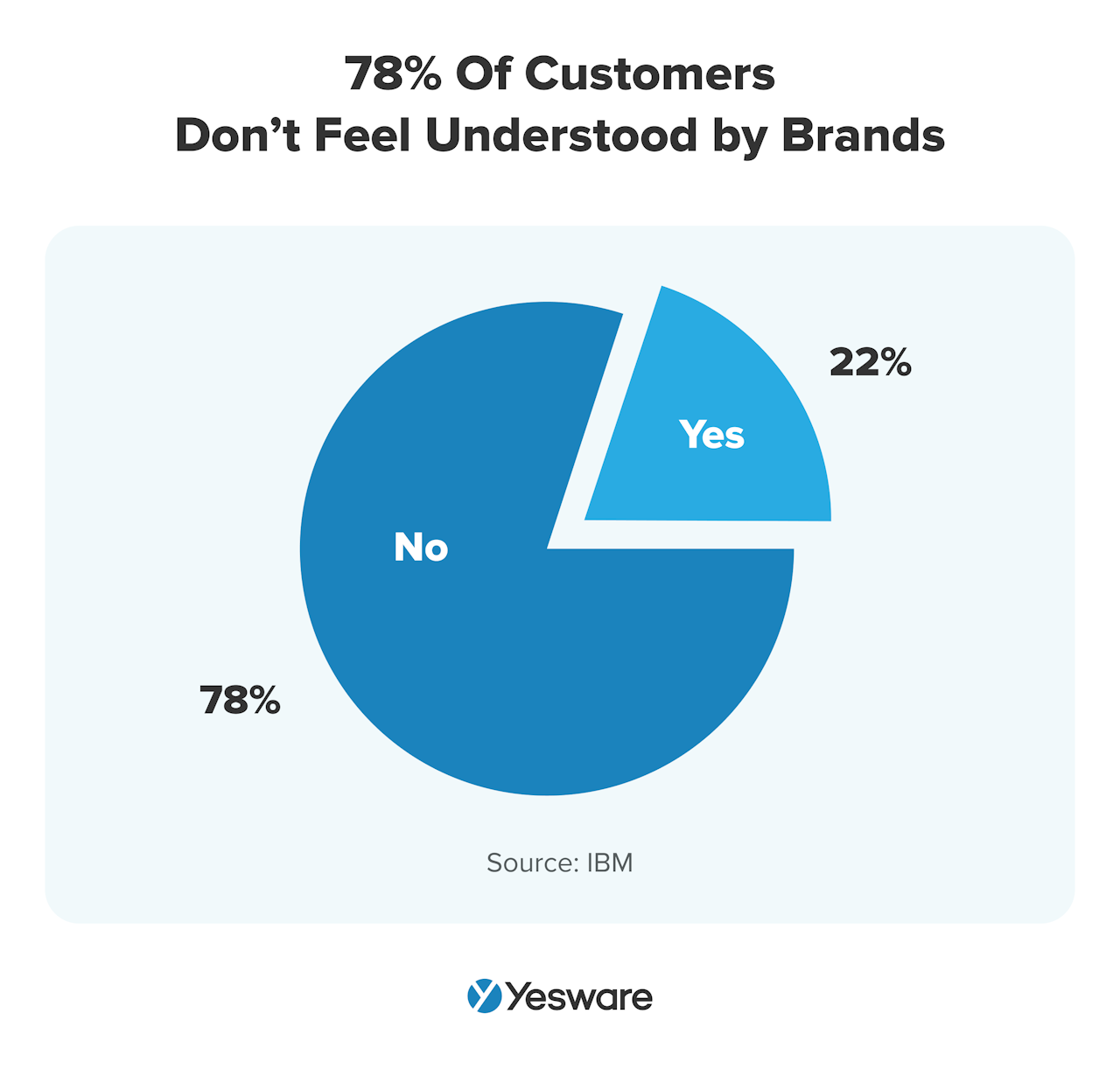 That’s why it’s necessary to ensure your prospects feel that you understand the problems they’re facing and that you truly want to help solve them in order to accomplish their goals.
That’s why it’s necessary to ensure your prospects feel that you understand the problems they’re facing and that you truly want to help solve them in order to accomplish their goals.
By making it clear that they’ve been heard – they’re much more likely to listen to the message you’re trying to convey.
Here are some effective ways of doing so:
1. Tailor Your Solution to Their Business
Present your solution in a way that solves their specific problems. Address their name, the company’s name, and any specific concepts or phrases they used to describe their pain points. Rephrase and incorporate these into your solution.
By doing so, you not only show them that you were listening, but you add elements of personalization to your pitch (which will only benefit the outcome of the conversation).
2. Use the Same Language
Use your prospect’s language and terminology. This is a common method for building rapport; it creates the sense that you’re on the same page and conveys feelings of trust and empathy.
Don’t completely change your personality, but make slight adjustments to match your prospect’s behavior.
Here are other ways of doing so:
- Mirror their body posture
- Adjust your tone and pace to be more similar to theirs
- Match their emotions and energy level
These mirroring techniques will help portray a mutual understanding.
3. Emphasize the Benefits of Solving the Pain Point
By leveraging these pain points and emphasizing ways their lives will be easier once they’re resolved, you open up a door and new perspective that will only motivate them to act fast on a solution.
4. Show How Your Solution Can Relieve This Pain
Make it clear how your solution will relieve these current struggles. Use social proof here, emphasize how customers of yours have saved X amount of time by adopting your solution. 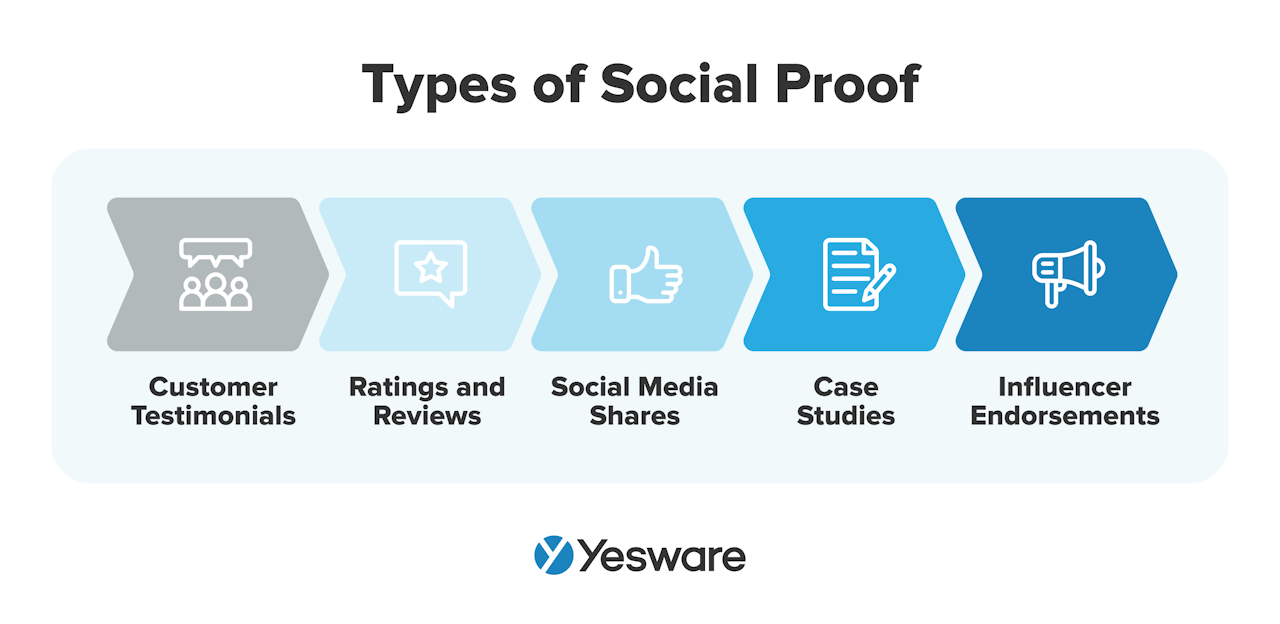 Remember: humans are social by nature. We rely on social cues from other people to identify how to act in certain situations (especially when making decisions). This is why social proof is so powerful and should be used to help guide and inform decision-making.
Remember: humans are social by nature. We rely on social cues from other people to identify how to act in certain situations (especially when making decisions). This is why social proof is so powerful and should be used to help guide and inform decision-making.
Conclusion
All in all, your ability to identify and solve customer pain points will put you ahead of the game.
Remember, although customer pain points can be very similar, there’s no one-size-fits-all tactic for addressing and offering the best solution.
The key is to listen and personalize your solution to each customer.
And always remember the importance of sales and marketing alignment – share research, data, and insights. By doing so, you’ll only see progress in your ability to pinpoint these pain points and help your customers address them head-on.
This guide was updated on January 17, 2023.
Get sales tips and strategies delivered straight to your inbox.
Yesware will help you generate more sales right from your inbox. Try our Outlook add-on or Gmail Chrome extension for free, forever!
Related Articles
Casey O'Connor
Casey O'Connor
Jenny Keohane
Sales, deal management, and communication tips for your inbox

